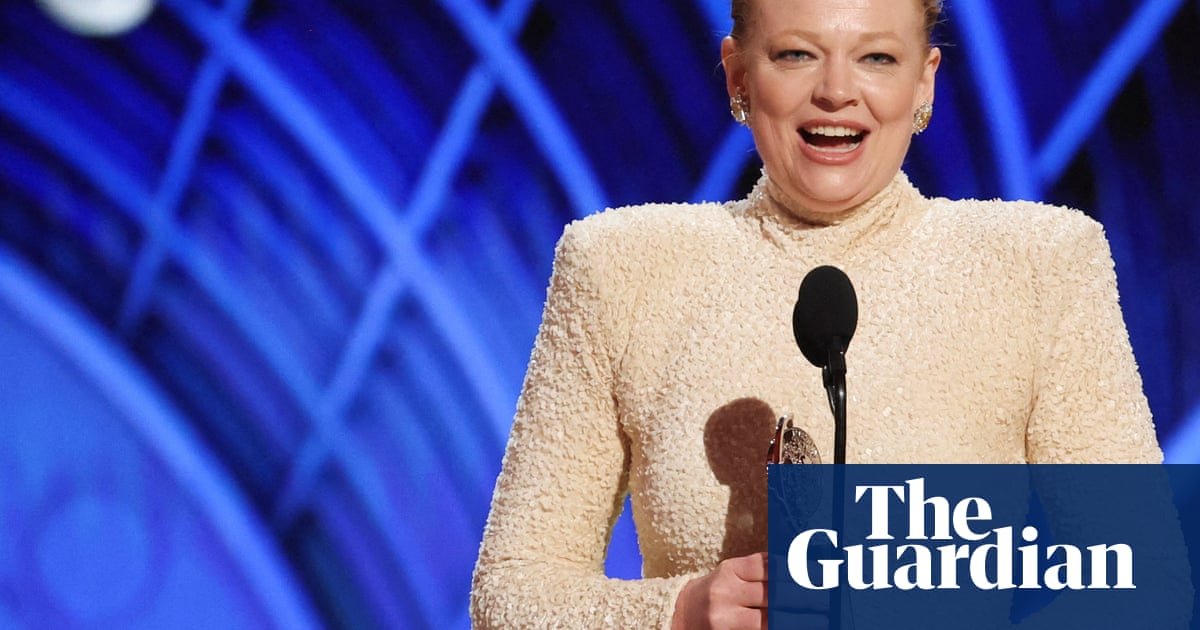SydneyTheatreCompany has recorded a $10m boost to revenue after its Dorian Gray production became a West End hit, and is poised to reap millions more when it receives a cut from this year’s even more lucrative Broadway run.
The company’s chief executive, Anne Dunn, cited commercial in confidence when asked whether that additional $10m was attributable to the heavy lifting done by Kip Williams’ phenomenally successful production, which is now grossing more than $1.6m a week on Broadway and earlier this week earned Snook her first Tony.
More than 77,000 people paid to see Australia’s stage adaptation of Oscar Wilde’s The Picture of Dorian Gray in London’s West End last year.
Sign up for Guardian Australia’s breaking news email
But theSydneyTheatre Company is remaining tight-lipped about the part the internationally lauded production, which collected Laurence Olivier awards for best costume design and best actress for Snook, played on the company’s bottom line in its 2024 annual report, released on Thursday.
That report showed the company was still not out of the red but its total deficit shrunk from $1.8m in 2023 to $566,000.
Gross revenue from continuing operations, which includes local box office takings and income from touring, licensing and royalty payments, came to $37.7m in 2024, $10m more than the company earned the previous year.
After multiple sold-out Australian seasons, heavyweight theatrical production house Michael Cassel Group licensed the rights to the production to transfer Dorian Gray to London and New York. The nature of the deal with STC remains confidential, with Dunn saying only that STC has received royalties and has retained a “small investment stake” in the production’s ongoing life.
That investment stake – just under $500,000 paid in 2023 – was secured through the generosity of STC donors, Dunn said.
There is no evidence in the 2024 report that the company has stumped up another $500,000 to retain its stake in the Broadway production but Dunn said a further agreement with Cassel was signed early this year.
While the generosity of the company’s benefactors in 2023 made the global success of Dorian Gray possible, the largesse of supporters in 2024 was comparatively lean, with its fundraising arm earning just $4.86m compared with the previous year’s $5.9m.
“It was a challenging start to the year on a number of issues and I think it’s a very competitive environment for philanthropic support,” Dunn said.
In November 2023, the company saw the departure of two of its board members and threats of cancelled subscriptions afterthree actors used a curtain call to signal their support for Palestinians in Gazaduring a season of Chekhov’s The Seagull.
The company issued three apologies over the incident and cancelled one performance.
While the protest took place in late 2023, its financial impact would not have been felt until the following year.
“It’s an impossible question to answer specifically,” Dunn said. “You’re asking me, how much did we not receive? And that’s something just we don’t know. Philanthropy is something that people gift to the company each year, and some people may have chosen not to. We can’t know exactly what they may have given if they had made a different decision.”
Contrary to unconfirmed reports that the STC had lost some loyal followers due to The Seagull protest, subscriptions and casual ticket sales were up by more than 10,000 – from 228,847 in 2023 to 239,951 in 2024.
Dunn described Suzie Miller’s Ruth Bader Ginsberg play, RBG, One of Many, Joanna Murray-Smith’s Julia Gillard work, Julia, and the adaptation of Pip Williams’ The Dictionary of Lost Words as standout successes.
The resonance the STC-commissioned RBG would have with US audiences is obvious but Dunn said there were as yet no formal discussions with the Michael Cassel Group on a follow-up to Dorian Gray’s success on Broadway with RBG.
“But we can certainly see there would be some market appeal,” she said.
The Michael Cassel Group did not respond to the Guardian’s request for comment.
Reflecting on Dorian Gray’s overseas triumph, Dunn insisted STC had no regrets about partnering with commercial producers instead of going it alone and reaping the lion’s share of the handsome profits. As a government-funded arts organisation, it was not the company’s role to embark on risky overseas commercial ventures, she said.
“And taking a show to Broadway and the West End is a very risky proposition. As a not-for-profit theatre company in Australia, what we specialise in is generating new shows … It’s about doing the work on creative development and giving space [for] these incredible shows”
In 2024 STC received $2.58m from the federal government through Creative Australia and a further $574,000 from Create NSW, which contributed just 6.7% of the company’s annual revenue.
“That makes us the most highly leveraged of the not-for-profit arts companies in the country,” she said.
The Sydney Theatre Company will announce its 2026 season on 15 September.
